Frank Sabatté is a Catholic priest, artist and member of the Paulist Fathers religious order.
He currently serves as the Director of the Openings Collective in New York City and is Senior Curator of the Gallery at the Sheen Centre for Thought and Culture.
Frank graduated from the College of Fine Arts at UCLA. He is Artist-in-Residence for the Paulist Fathers in New York and has been an illustrator for the Paulist Press since 1977.
In this interview, Frank talks about what inspires him and we learn how discovering the random-stitch method of embroidery has enabled him to create his hypnotic portraits.
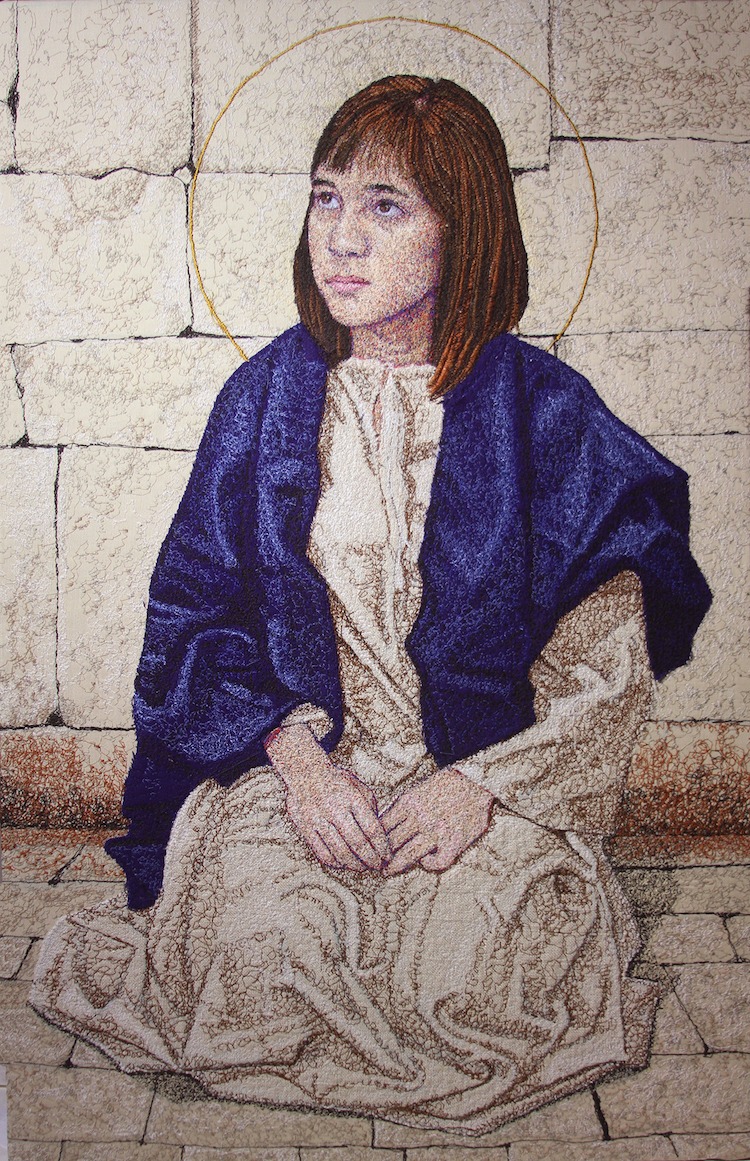
Awe-inspiring tapestries
TextileArtist.org: What initially attracted you to textiles as a medium?
Frank Sabatté: In 2002 I was visiting the Cathedral of Our Lady of the Angels which had just been completed in Los Angeles. The principal artist for the interior was John Nava who completed a series of large tapestries done in a realist style with a limited palate and depicting the Communion of Saints, a Catholic doctrine.
For the saints other than contemporary saints, Nava hired a casting agent to hire models that reflected the ethnic diversity of the city. He did paintings of the persons walking in procession as well as a large depiction of the baptism of Jesus.
When I saw the work I was in awe, but when I came upon the image of Mary Magdalene I was stunned. I decided that I had to pursue a textile medium, however, I did not want to do tapestry, so I searched for something else.
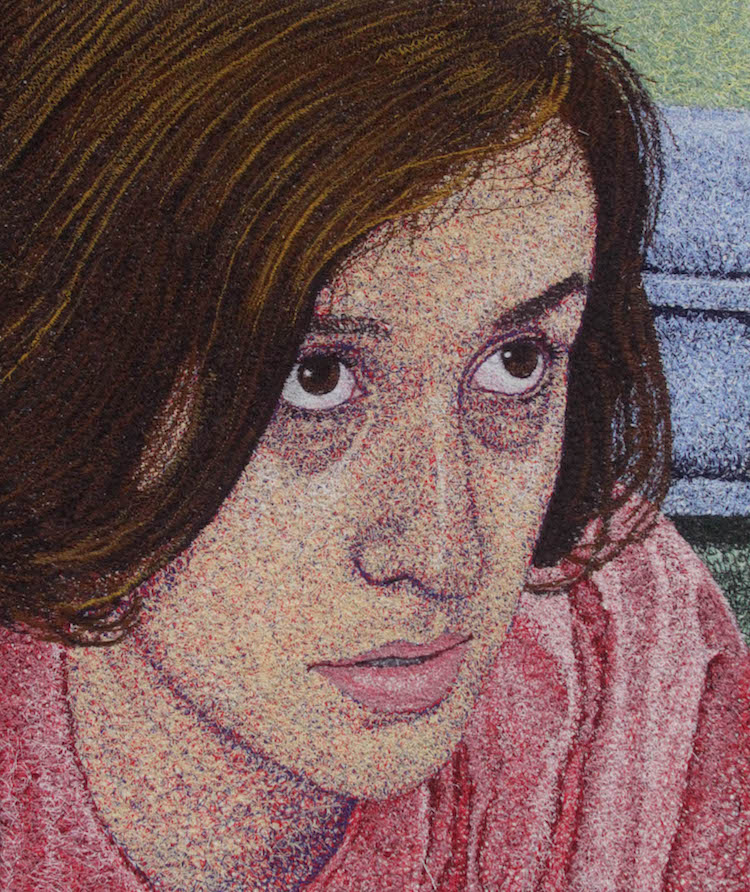
And, more specifically, how was your imagination captured by stitch?
After viewing the Nava tapestries I searched the internet for various textile mediums. I discovered the random-stitch method of embroidery developed in Suzhou, China in the 1930’s. It was a departure from traditional Chinese embroidery and laid down the threads in a random way to create portraits.
I then searched YouTube and found a demonstration of free-motion embroidery being used to put embellishments, flowers etc, on clothing. The feed-dogs were lowered and the stitch width was controlled by the knee. I combined the two methods and developed mine.
What or who were your early influences and how has your life influenced your work?
When I was deciding a college major I chose art as I had discovered I could draw. I was very privileged to study at UCLA under Lee Mullican, James Valerio, Elliot Elgart and others, all of whom influenced me.
At the same time, I was considering becoming a priest and was drawn to the Paulist Fathers Catholic Center while at UCLA.
One of my goals has been to bridge what I consider to be an artificial separation between the ‘secular’ and the ‘spiritual’.
When I did the series on the victims of the Khmer Rouge genocide I was profoundly affected by the Catholic belief in the Communion of Saints, that our beloved dead are not separated from us, but are with us always.
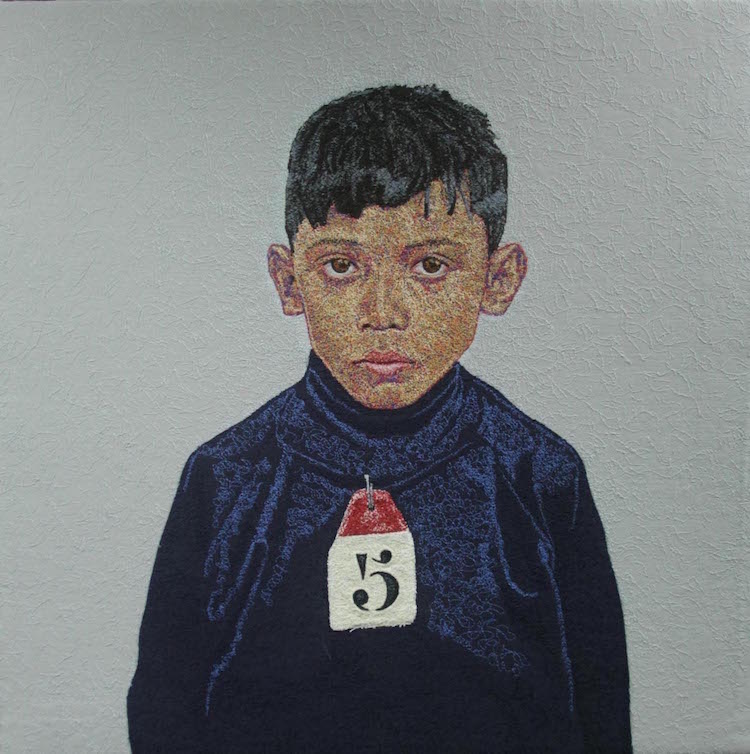
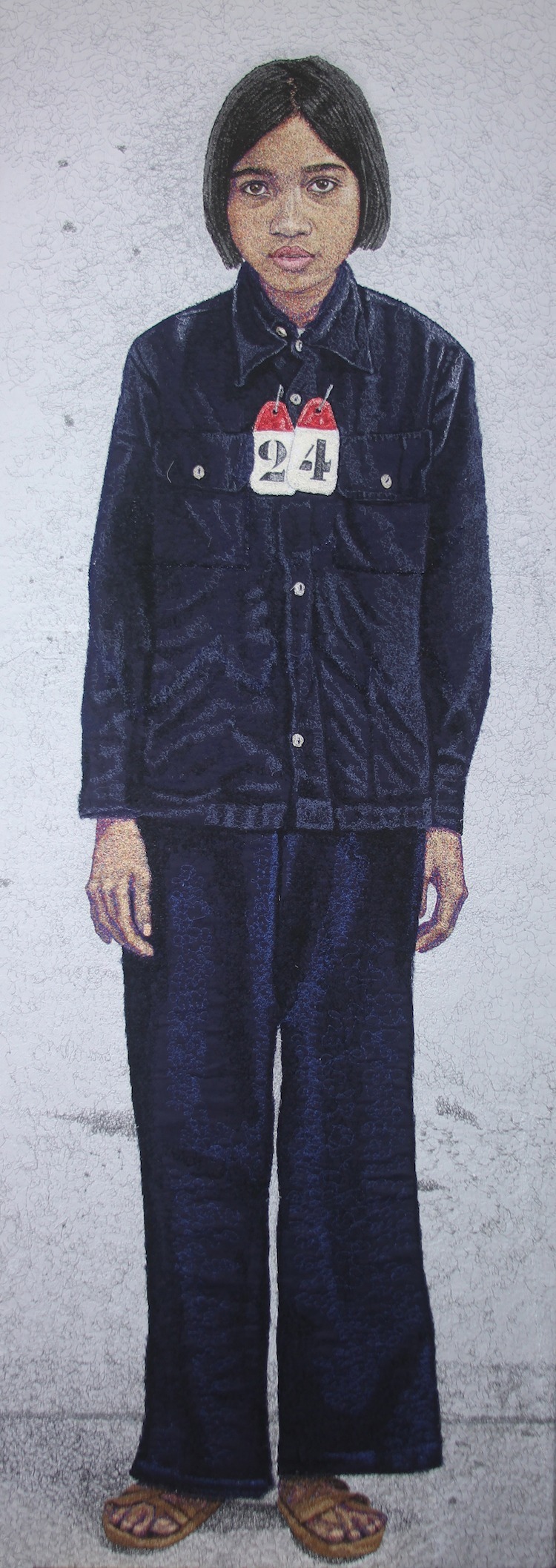
Painting with thread
What was your route to becoming an artist?
I discovered I could draw when I was 12 and started copying photographs. Unfortunately, there were no art instructions at my grammar school or high school so, at that point I was self-taught. When I went to college, that changed and had rigorous drawing and painting courses.
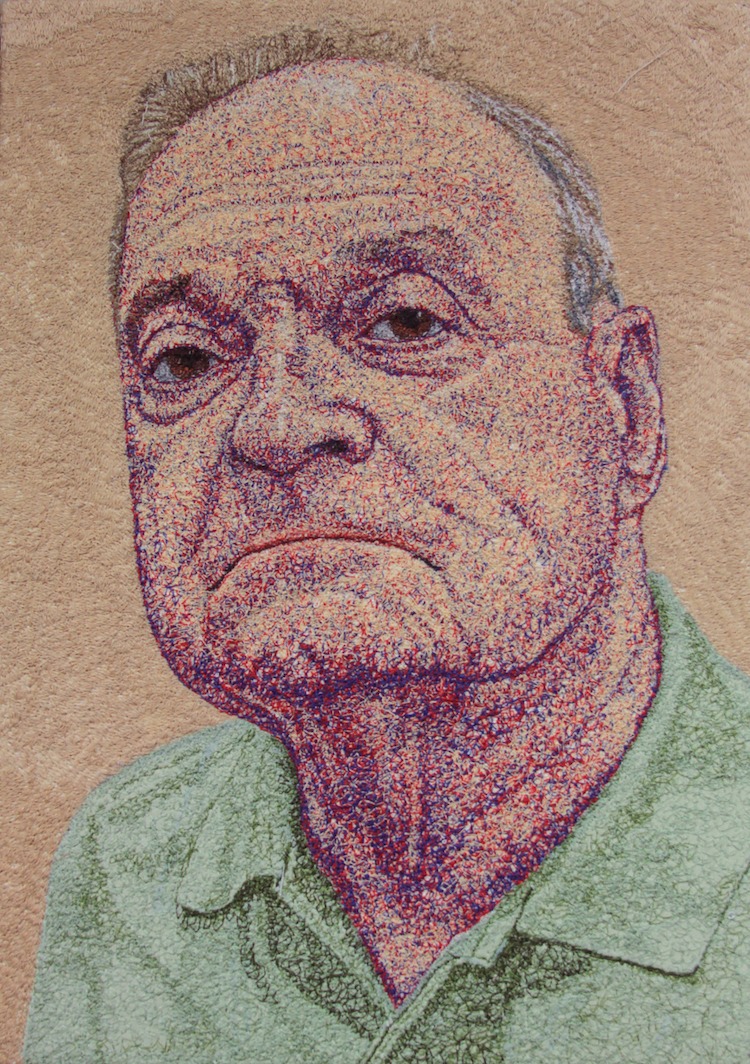
Tell us a bit about your chosen techniques.
Random-stitch, free-motion embroidery is a process of layering thread using an industrial sewing machine. I am quick to point out that the machine is not computer-aided and does not substitute for knowledge of colour theory and drawing skill. The machine is, for all intents and purposes, a paintbrush.
I use Photoshop and Adobe Illustrator to prepare the image I want to render then I free-hand draw the image in sections starting with the face, in ballpoint pen, pencils leave graphite particles in the machine, on an interfaced piece of cotton duck.
I then layer in the base colour, a yellow hue, followed by red and blue. By adjusting their proximity I control the tones and, as in pointillism, the illusion of secondary and tertiary colours.
After a while, the layers build up a thickness, which is why an industrial machine is essential. For the clothing and background, I lay down a base colour using wool-silk fabric then stitch over that. It would be too much wear on the machine to use thread alone at that stage.
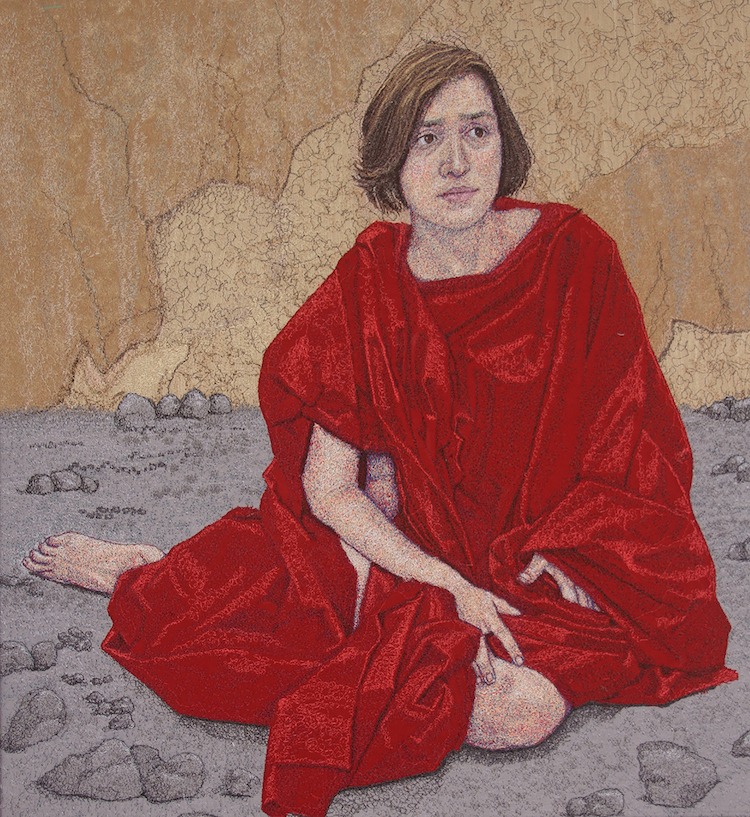
How would you describe your work and where do you think it fits within the sphere of contemporary art?
I have been told by those who know that my work is fine art and is contemporary. I am doing what I believe I am called to do in choosing subjects.
The work Bernice Lee, Palo Alto, 1931 depicts my mother at 14. She died in 1986 and I felt this work was a kind of reconciliation.
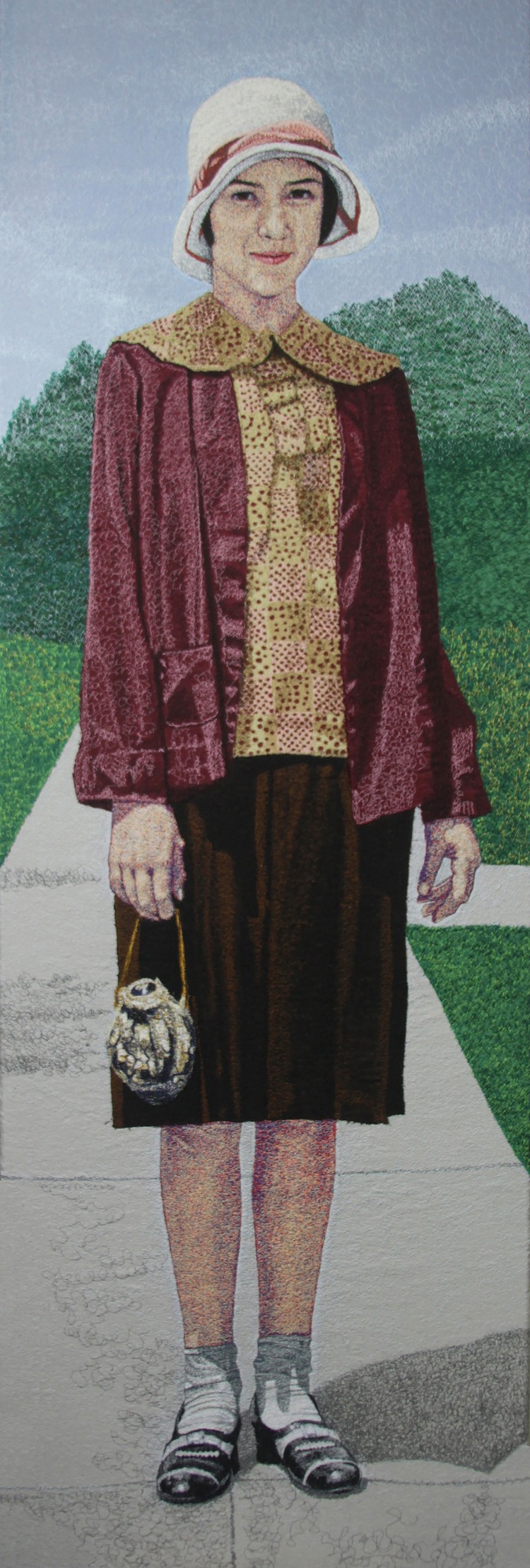
What environment do you like to work in?
I have a studio in the basement of the Paulist Fathers rectory, priests house, and like to listen to traditional Chinese music as I work.
What currently inspires you?
As I said the subjects in a sense ‘present themselves’.
For Jennie Lee, Nebraska, 1898 which is a portrait of my grandmother at 18, I was inspired by her life as a Nebraska pioneer who had a difficult marriage, her husband’s house is in the background and who was a huge influence on me when I was a child.
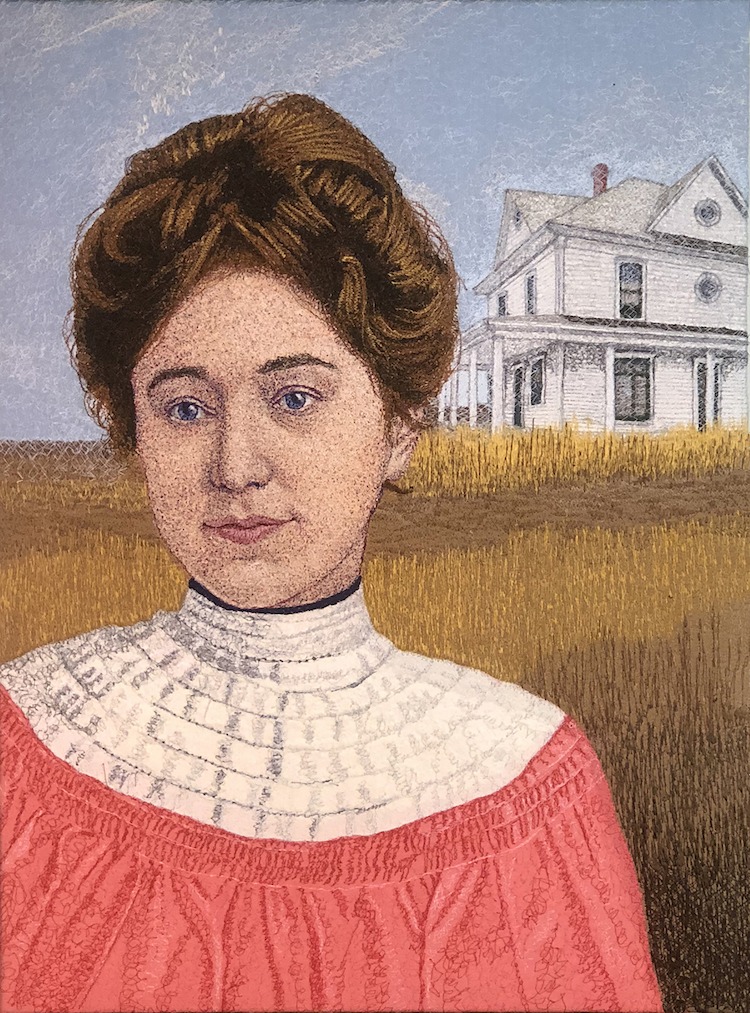
Tell us about a piece of your work that holds particularly fond memories and why?
I have mentioned two above. My most recent, St. Bernadette Soubirous reconnected me with my family of origin. My French grandparents were born in the same region, in the same era and spoke the same language as Bernadette (Occitan).

How has your work developed since you began and how do you see it evolving in the future?
It most definitely has. My palette and colour choice have become stronger, the threading is denser which results in a kind of translucence.
The joy of working
What advice would you give to an aspiring textile artist?
Don’t limit yourself. Creative people are always drawn to a whole lot of ideas. But most of all, learn what took me years to learn: let go of the idea that you are doing this work so that people will like you. When you get stuck in the notion that ‘if they like my work they will like me’ you will never do strong work.
We create because we have to. Listen to the voice inside that will tell you what is working and not working. I know someone who considers himself an artist. His work is dreadful and the problem is he isn’t taking incoming calls.
Get artists or persons who have a good eye who you trust to critique your work. You work for the joy of working not for cash and prizes.
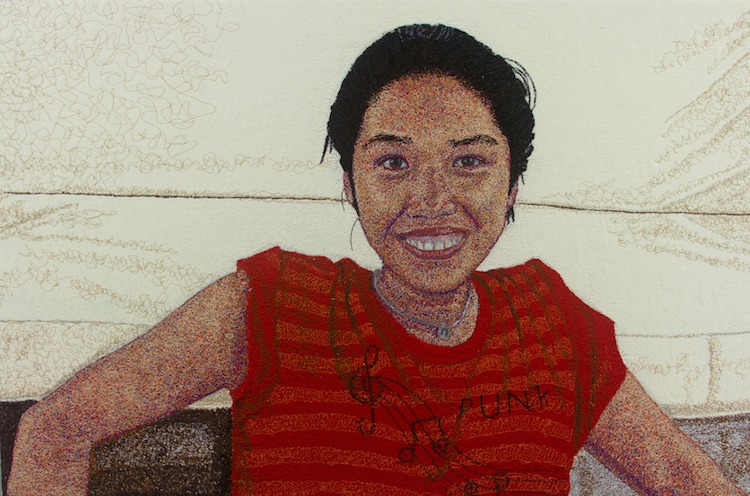
Can you recommend 3 or 4 books for textile artists?
I am sure there are some good books out there but I prefer to recommend taking a class in your area of drawing, painting and composition skills.
What other resources do you use? Blogs, websites, magazines etc.
Pose Space, a great source for models.
What piece of equipment or tool could you not live without?
A [easyazon_link identifier=”B0037IPE0S” locale=”UK” tag=”wwwtextileart-21″]Bernina 950 Industrial Machine. I could live but not do what I do!
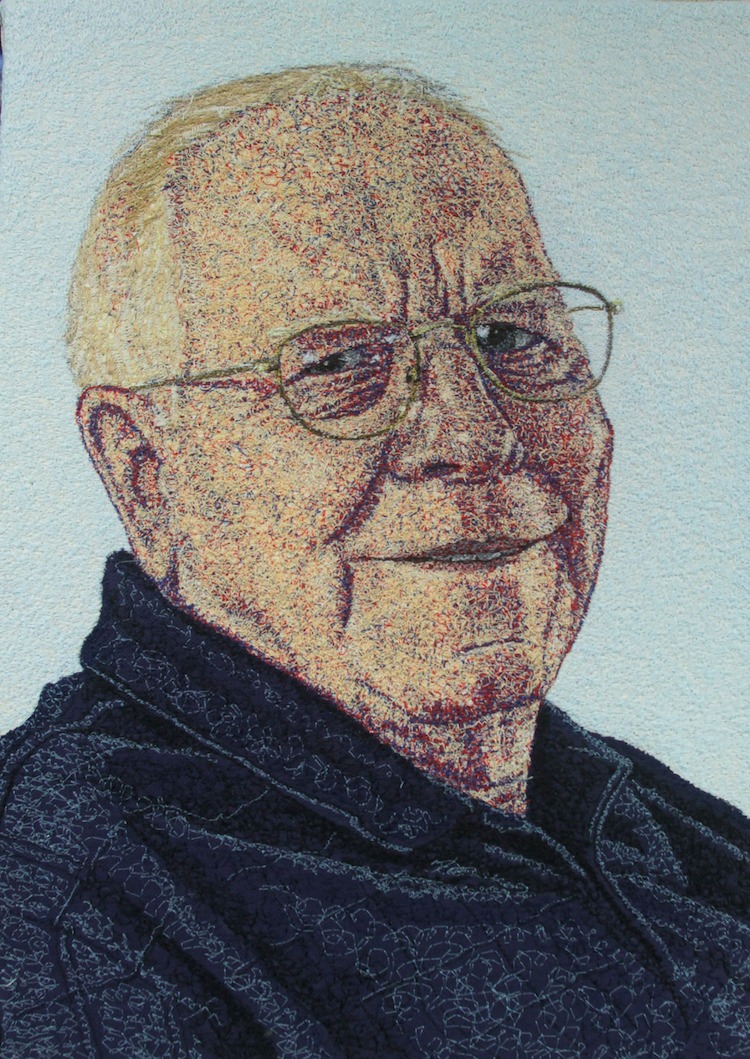
Do you give talks or run workshops or classes? If so where can readers find information about these?
If asked I would.
How do you go about choosing where to show your work?
Sometimes I am invited. Sometimes I enter a competition.
Where can readers see your work this year?
At the Church of St. Paul the Apostle and on my website.

For more information visit: www.sabatteart.com
Let your friends know about this artist’s work by sharing the article on social media. It’s easy – click on the buttons below!
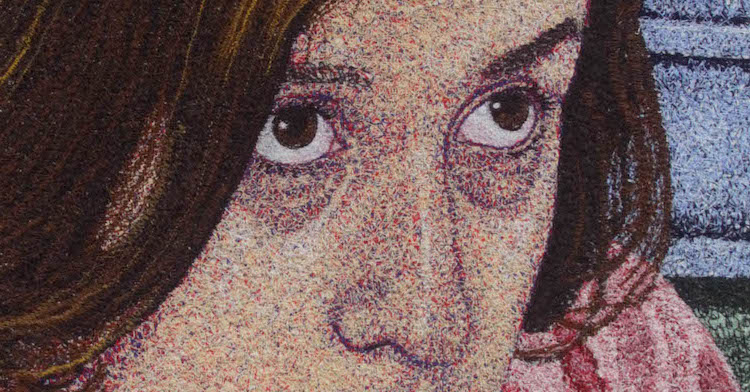
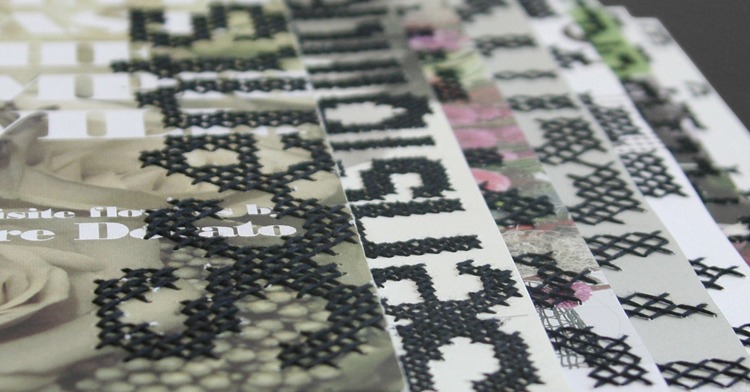
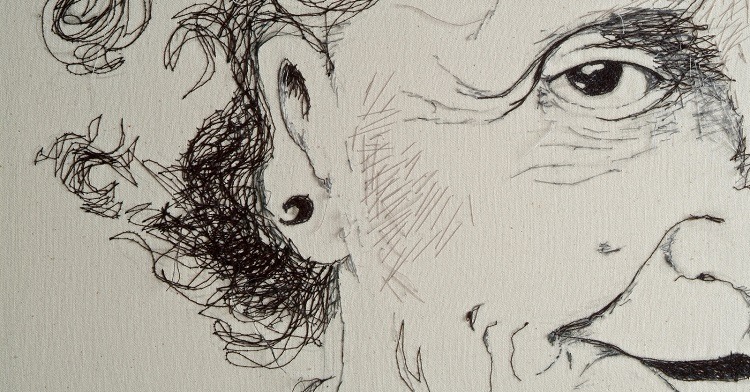
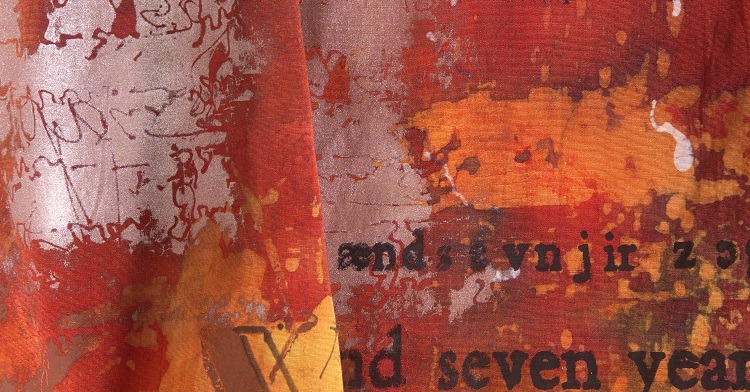
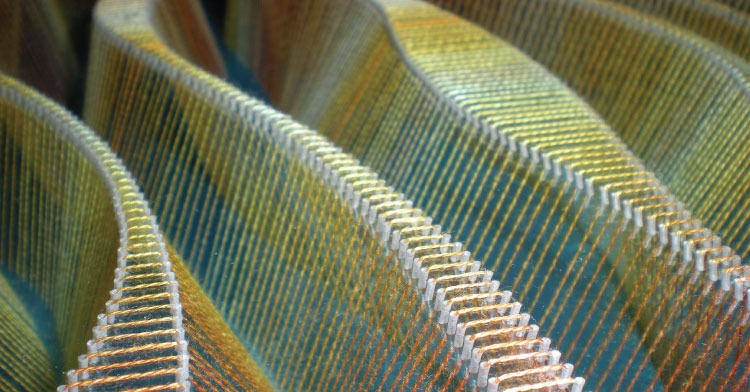
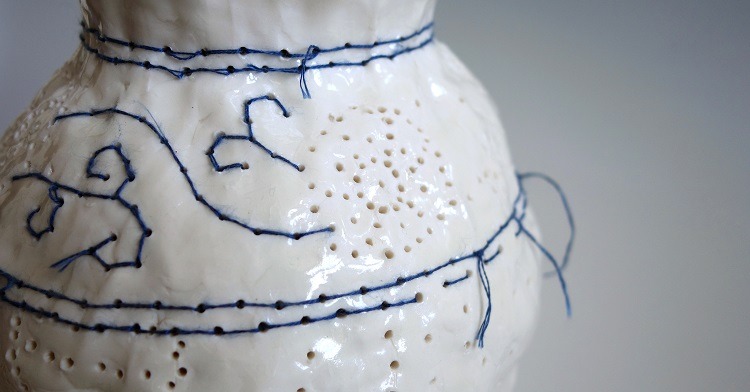
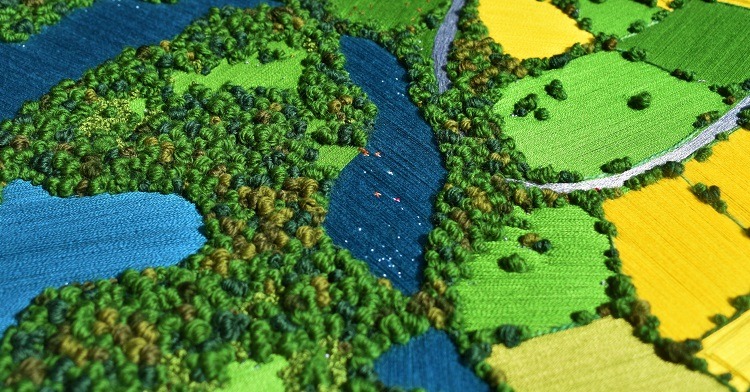
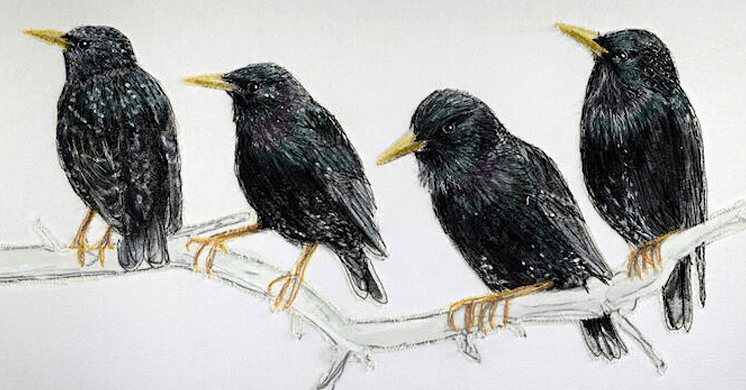
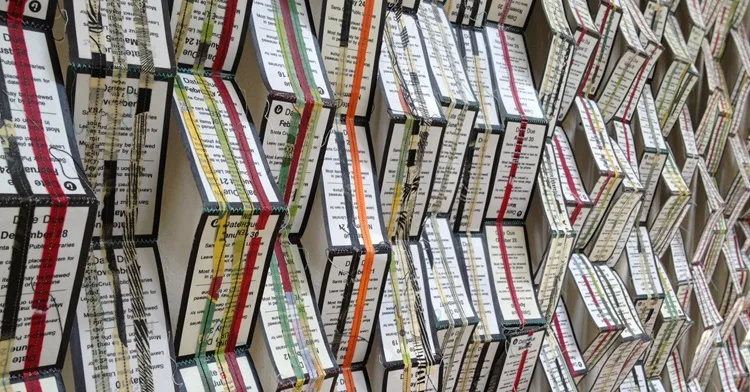
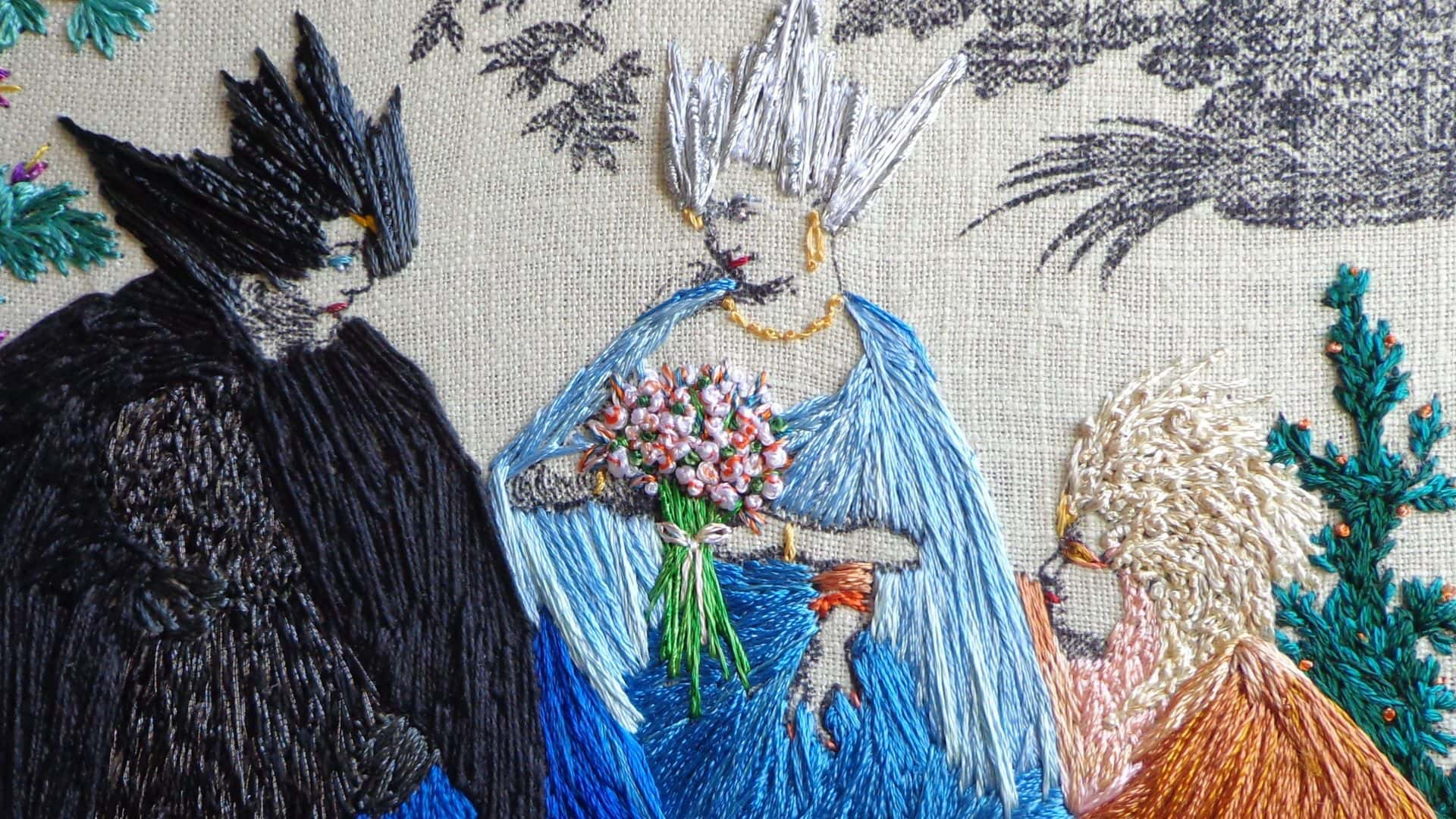
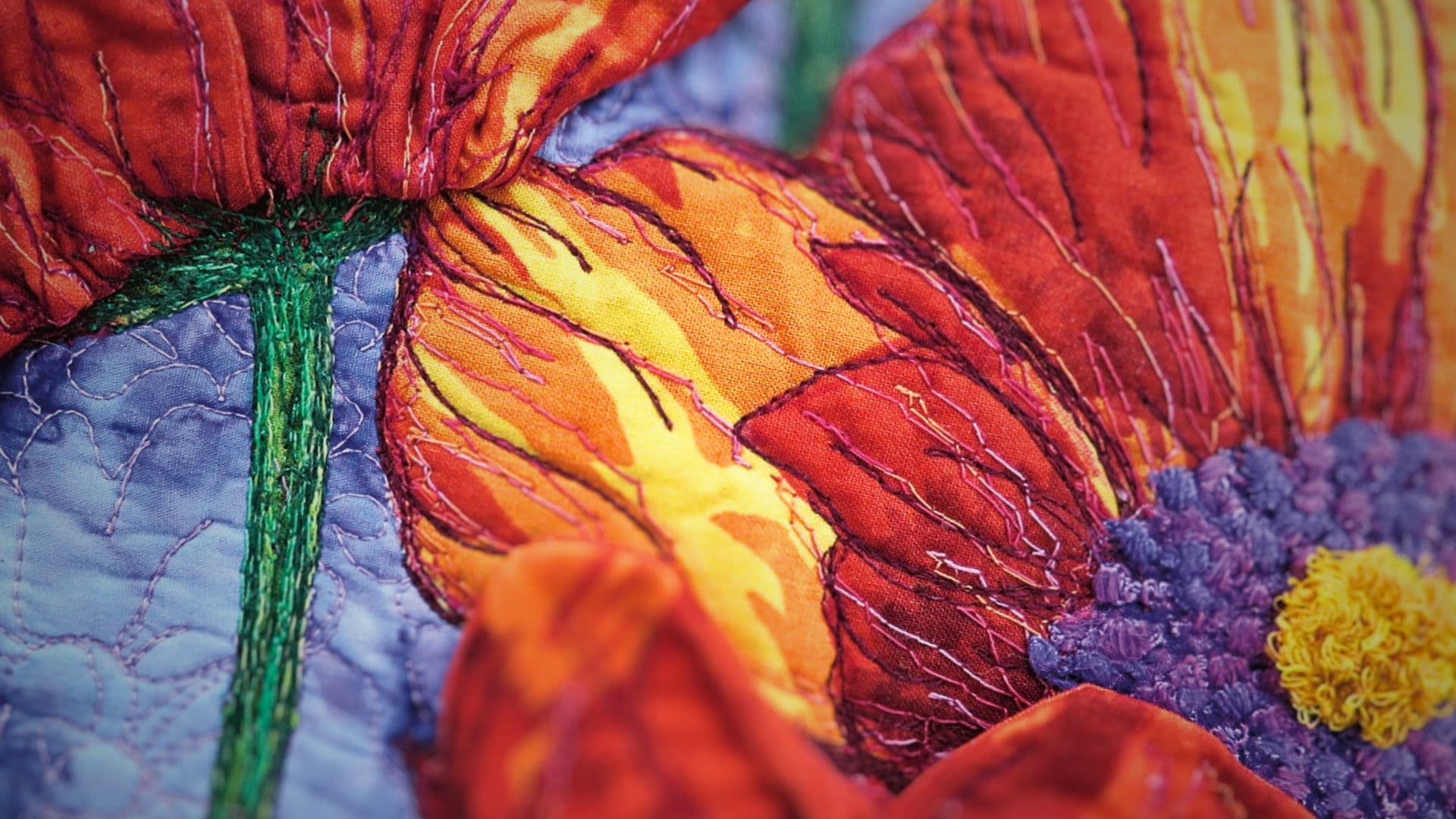
1 comment
Pierre André Plauzoles
Hello.
It has been a long time since yougraced the grounds of the University Catholic Center at UCLA — or the university from most of the students at the UCC call their acdemic “home”. I have a somewhat personal question that has been “bugging” me for a while. Are you by any chance related to the Sabatié family of southeastern France? in other words, are the Sabaté and Sabatié families related?
Thank you and may God bless you — ***and*** your art!!
Pierre André Plauzoles
Hello.
It has been a long time since yougraced the grounds of the University Catholic Center at UCLA — or the uiverity from most of the students there call their acdemic “home”. I have a somewhat personal question that has been “bugging” me for a while. Are you by any chance related to the Sabatié family of southeastern France? in other words, are the Sabaté and Sabatié families related?
Pierre André Plauzoles